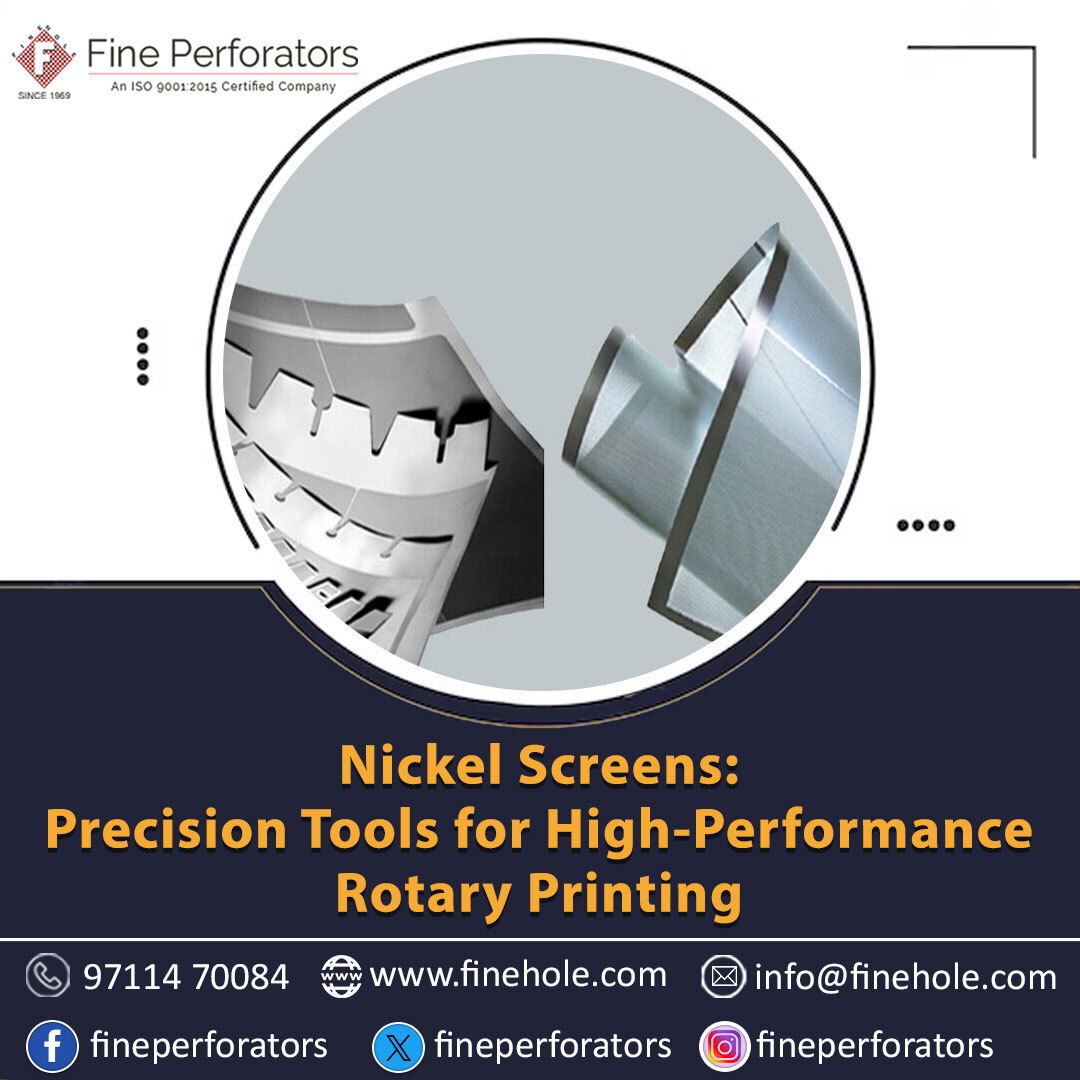Nickel Screens: Precision Tools for High-Performance Rotary Printing
In the world of modern industrial printing, especially textile printing, precision, durability, and consistency are non-negotiable. Among the most essential components driving this precision are nickel screens—fine, high-strength cylindrical screens used predominantly in rotary screen printing. These specialized screens offer unmatched performance and reliability, making them indispensable in various printing applications.
What Are Nickel Screens?
Nickel screens are seamless, cylindrical screens made from electroformed high-purity nickel. These screens are primarily used in rotary screen printing machines to apply color and patterns onto a wide range of substrates, including textiles, wallpaper, packaging materials, and ceramics.The screen’s surface contains a precise mesh of microscopic holes or apertures that allow ink to be transferred onto the substrate in controlled patterns. The combination of high strength, fine resolution, and uniform ink distribution makes nickel mesh screens essential for high-speed, high-volume printing operations.

Key Features of Nickel Screens
- Material: Made from high-grade nickel via electroforming, ensuring superior strength and corrosion resistance.
- Seamless Design: Uniform cylinder with no visible joins, preventing distortions and ensuring smooth ink flow.
- Customizable Mesh Counts: Available in a range of mesh sizes (from 40 to 165 mesh or more), allowing for both fine-detail and high-volume ink applications.
- Excellent Dimensional Stability: Maintains shape even under high tension and speed during printing operations.
Applications of Nickel Screens
Nickel screens are used across several industries for rotary screen printing and other precision processes, including:
- Textile Industry
- Printing on cotton, polyester, silk, rayon, and blended fabrics.
- Widely used for decorating garments, upholstery, and home furnishings.
- Printing on cotton, polyester, silk, rayon, and blended fabrics.
- Packaging & Labels
- Ideal for printing on flexible packaging materials and product labels.
- Ideal for printing on flexible packaging materials and product labels.
- Wallpaper & Decorative Surfaces
- High-resolution designs printed on decorative paper and wall coverings.
- High-resolution designs printed on decorative paper and wall coverings.
- Ceramics
- Used for transferring intricate patterns onto tiles and ceramic items.
- Used for transferring intricate patterns onto tiles and ceramic items.
- Nonwoven & Technical Textiles
- Applied in printing or coating nonwoven fabrics used in medical and industrial applications.
- Applied in printing or coating nonwoven fabrics used in medical and industrial applications.
Benefits of Using Nickel Screens
High Precision Printing
- The fine, uniform mesh allows for accurate and detailed pattern reproduction.
Durability and Long Lifespan
- Resistant to wear and corrosion, ensuring a long operational life even in high-speed production lines.
Reduced Downtime
- Strong and stable screens reduce breakage and stretching, which helps minimize machine stops and increases productivity.
Customizability
- Available in various diameters, lengths, and mesh counts to suit specific printing needs.
Smooth Ink Transfer
- The seamless surface of the screen ensures consistent ink flow and avoids smudging or uneven prints.
Choosing the Right Nickel Screen
When selecting a nickel screen, consider the following factors:
- Mesh Count: Higher mesh counts are better for detailed work; lower mesh counts allow for more ink flow.
- Screen Thickness: Thicker screens last longer and resist deformation.
- Screen Diameter and Length: Must match the rotary screen printing machine specifications.
- Type of Ink and Substrate: Some inks or materials may require specialized screen coatings or mesh sizes.
Conclusion
Nickel screens are a critical component in achieving high-quality, efficient rotary printing across various industries. Their precision engineering, strength, and versatility make them the preferred choice for manufacturers seeking flawless results at high speeds.
Source: https://fineholeindia.tumblr.com/post/784607970180923392/nickel-screens-for-rotary-printing
